EHSB Journal of Environmental Health Columns for 2008
2008 Direct from CDC columns
Quick links for columns in: 2016, 2015, 2014, 2013, 2012, 2011, 2010, 2009, 2007, 2006
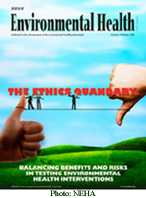
Mary Jean Brown highlights the five steps that will provide a clear path to achieving the 2010 goal of eliminating elevated blood lead levels in children in the January-February issue of the Journal of Environmental Health. Her article, Childhood Lead Poisoning Prevention: Getting the Job Done by 2010 [PDF - 207 KB], emphasizes that even after the 2010 goal is achieved, primary prevention efforts must be maintained and surveillance systems in place to ensure that these efforts are effective.
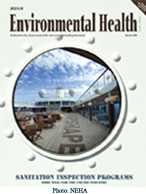
Pam Wigington and Teresa Sims discuss Web-Based Resources for Environmental Public Health Practitioners [PDF - 177 KB] in the March issue of the Journal of Environmental Health. See also, Shipshape: Sanitation Inspections on Cruise Ships, 1990-2005 [PDF - 555 KB], by Elaine Cramer, Curtis Blanton, Charles Otto, and the Vessel Sanitation Program EH Inspection Team.
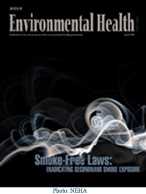
In the Journal of Environmental Health's April issue, CAPT Mark Miller discusses Emergency Preparedness and Response Training for Environmental Health Practitioners [PDF - 177 KB]. He mentions the need for Environmental Health Training in Emergency Response (EHTER) and the continued interest in training (more than 450 participants to date). Also in development the the EHTER train-the-trainer toolbox.

In conjunction with RWI Prevention Week (May 19–25, 2008), CAPT Charles Otto and Paula Joe discuss Recreational Water Illness Prevention, 2008 [PDF - 171 KB] in the May issue of the Journal of Environmental Health. This year's RWI prevention program will be expanded to include natural swimming venues, a special toolkit for the aquatics industry, and an improved toolkit for regulatory programs.
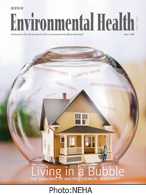
Pam Wigington provides content and formatting tips in the June issue of the Journal of Environmental Health. Her column Clear Messages for Effective Communication [PDF - 185 KB] offers many quick tips on how to relay your message to an audience with clear and precise methods, such as using active voice and matching graphics as well as other helpful content management information.
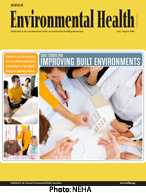
Andrew Dannenberg and Paris Ponder introduce built environment case studies in their commentary, Role of Environmental Health Professionals in Improving the Built Environment [PDF - 123 KB], in the July-August issue of the JEH. The four case studies are from Colorado [PDF - 892 KB], Michigan [PDF - 408 KB], Ohio [PDF - 333 KB], and Washington [PDF - 439 KB].
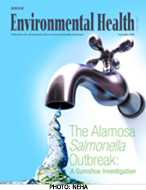
Laura Green discusses the importance of behavioral science research and methods in food-safety efforts in the September issue of the Journal of Environmental Health. Her article, Behavioral Science and Food Safety [PDF - 270 KB], discusses how behavioral science interviewing techniques can be used to improve the quality of information collected about food workers' behaviors.
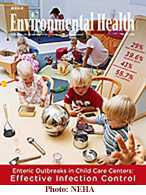
The Healthy Housing Inspection Manual [PDF - 241 KB] is the focus of the EHS column in the October issue of the Journal of Environmental Health. The column features the preface of the manual and discusses its usefulness in helping health and housing programs identify housing deficiencies resulting in adverse health effects to occupants.
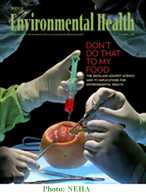
Hilary Heishman and Andrew Dannenberg provide tips for environmental health professionals on Influencing the Built Environment in Your Community [PDF - 241 KB] in the November issue of the Journal of Environmental Health.
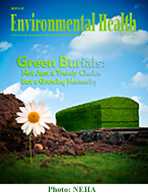
Rob Blake talks about how the Environmental Health Services Branch is Enhancing and Revitalizing Environmental Public Health [PDF - 1.4 MB] by strengthening the roles of EH programs and professionals to better anticipate, identify, and respond to adverse environmental exposures and their consequences for human health. Read his column in the Journal of Environmental Health's December issue.
- Page last reviewed: November 26, 2014
- Page last updated: December 29, 2015
- Content source:


 ShareCompartir
ShareCompartir